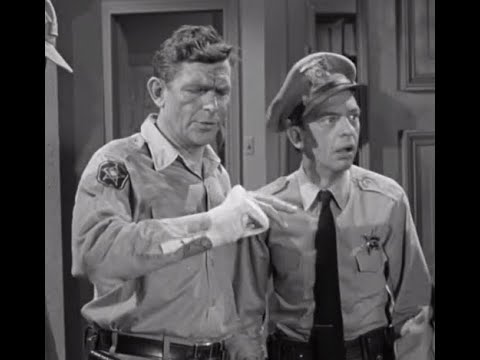
The Silence Behind the Sling: Unraveling the Mystery of Andy Griffith's Injured Hand
The gentle strum of Andy Griffith's guitar, the comforting twang of his North Carolina accent, the reassuring presence of Sheriff Andy Taylor – these are the cornerstones of American nostalgia, etched into our collective memory. “The Andy Griffith Show” offered a vision of idyllic small-town life, a balm against the anxieties of a rapidly changing world. But behind the perpetually sunny façade of Mayberry lay a real world, complete with its own share of challenges and, yes, even a touch of mystery. One such enigma, often whispered about by fans, is the frequent appearance of Andy Griffith with his left arm in a sling. While various theories abound, piecing together the truth behind Andy Griffith's injured hand reveals not only the practical realities of filmmaking but also the actor's commitment to his craft and his characteristic down-to-earth approach to adversity.
The most common and perhaps most accurate explanation for the sling is a simple one: Griffith suffered a fall, resulting in a torn rotator cuff. The injury, exacerbated by years of physical activity and aggravated further by the demands of filming, proved persistent. He initially tried to ignore the pain, a common tactic for performers eager to deliver their best, but the discomfort soon became unbearable. This is where the magic of television meets the pragmatism of necessity. Rather than halting production or drastically altering the show's narrative, the creative team cleverly integrated the sling into the storyline.
Episodes featuring Andy with the sling offered a unique peek behind the scenes, a glimpse into the reality that even beloved television heroes aren’t immune to everyday injuries. The show cleverly explained the injury, often attributing it to clumsy mishaps or comical accidents. In one episode, he falls off the roof while trying to fix the television antenna; in another, he injures himself while chopping wood. These on-screen explanations, while lighthearted, served a vital purpose: they acknowledged the visible change without disrupting the show's established tone. They even provided opportunities for humor, allowing other characters to gently tease Andy about his clumsiness, reinforcing the show's theme of community and playful camaraderie.
However, the inclusion of the sling wasn’t merely a cosmetic fix. It forced the production team to rethink certain scenes, finding innovative ways to work around Griffith's limited mobility. Fight scenes, which were rare to begin with, were carefully choreographed or avoided altogether. Dialogue took precedence, allowing Griffith to rely on his expressive face and masterful delivery to convey emotion and authority. This, in turn, arguably strengthened the show’s appeal. “The Andy Griffith Show” was never about action-packed sequences; its heart lay in the nuanced interactions between its characters, the subtle humor, and the gentle lessons about life. The injury forced the show to lean even more heavily on these strengths, solidifying its reputation for heartwarming storytelling rather than physical spectacle.
Beyond the immediate challenges of filming, Griffith's injury speaks volumes about his professionalism and dedication to the show. He could have opted for surgery and taken extended time off, potentially jeopardizing the show's success and the livelihoods of the cast and crew. Instead, he chose to persevere, embracing the limitations imposed by his injury and working collaboratively with the production team to find creative solutions. This resilience and commitment to the show undoubtedly contributed to its longevity and enduring popularity. He demonstrated a quiet strength, a willingness to put the needs of the show above his own comfort, a characteristic that resonated with audiences and further solidified his image as a dependable and relatable figure.
In conclusion, the mystery surrounding Andy Griffith's injured hand is less about conspiracy and more about the practical realities of television production, the actor's unwavering commitment to his craft, and the show's ability to adapt and thrive in the face of unforeseen challenges. While the specific details of the injury might remain somewhat obscured by the passage of time, the enduring legacy of "The Andy Griffith Show" stands as a testament to the resourcefulness, dedication, and ultimately, the human spirit that lay behind the scenes, hidden behind the sling, and radiating from the heart of Mayberry. The image of Andy Taylor, even with his arm in a sling, remains a comforting reminder of simpler times, a reminder that even in the face of adversity, kindness, humor, and community can always prevail.
